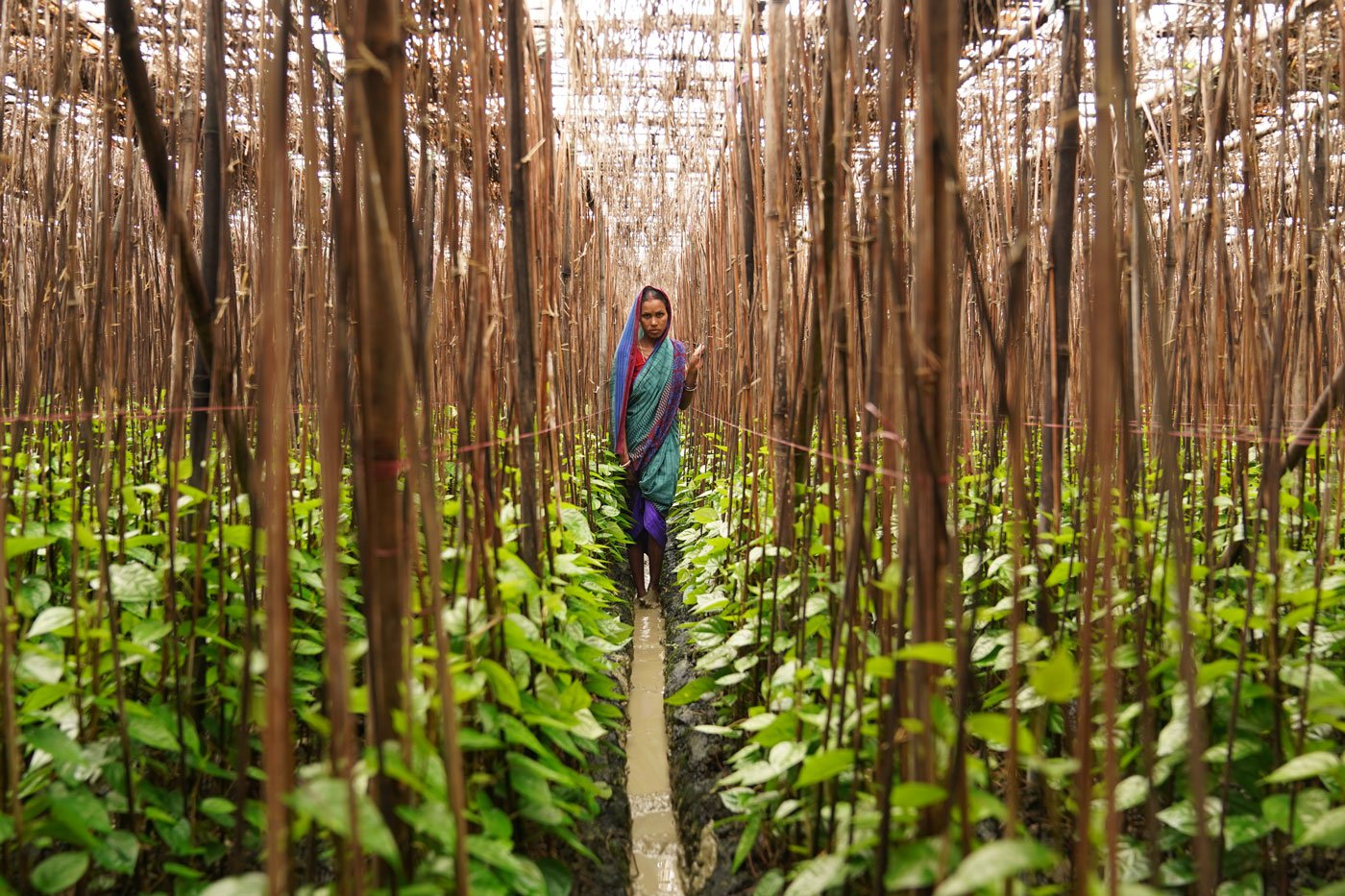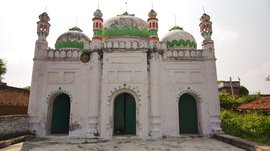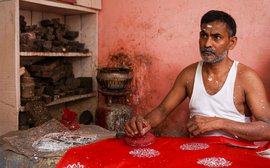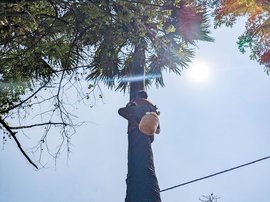“If the paan [betel leaf] had survived, it would have earned me at least two lakh rupees [in 2023],” says the 29-year-old farmer from Dheuri village, regret and sadness in her voice. Karuna Devi lost her June 2023 crop to extreme heat waves in Nawada district of Bihar. Her bareja , once a lush garden, brimming with shiny leaves of the famed Magahi betel leaf on its trellises turned into a skeletal structure. She was forced to take up jobs in others' barejas .
Nawada was among a dozen districts which faced the wrath of intense heat for days. “ Lagta tha ki aasman se aag baras raha hai aur humlog jal jayenge. Dopahar ko to gaon ekdam sunsan ho jata tha jaise ki karfu lag gaya ho [It seemed as if fire was raining from the sky and we would be burnt. In the afternoon the village would become completely deserted as if curfew had been imposed],” she adds, describing the heat that year. The district’s Warisaliganj weather station recorded a maximum temperature at 45.9 degree Celsius. And the subsequent heatwave that followed killed more than 100 people in Bihar and Uttar Pradesh, according to a report published in The Hindu , dated June 18, 2023.
Despite the blistering heat, “we would go to bareja ,” Karuna Devi says. The family was not taking any risk as they had taken a loan of Rs. 1 lakh to cultivate Magahi betel leaf a bareja spread over an area of six cottah [roughly 8,000 sq ft].
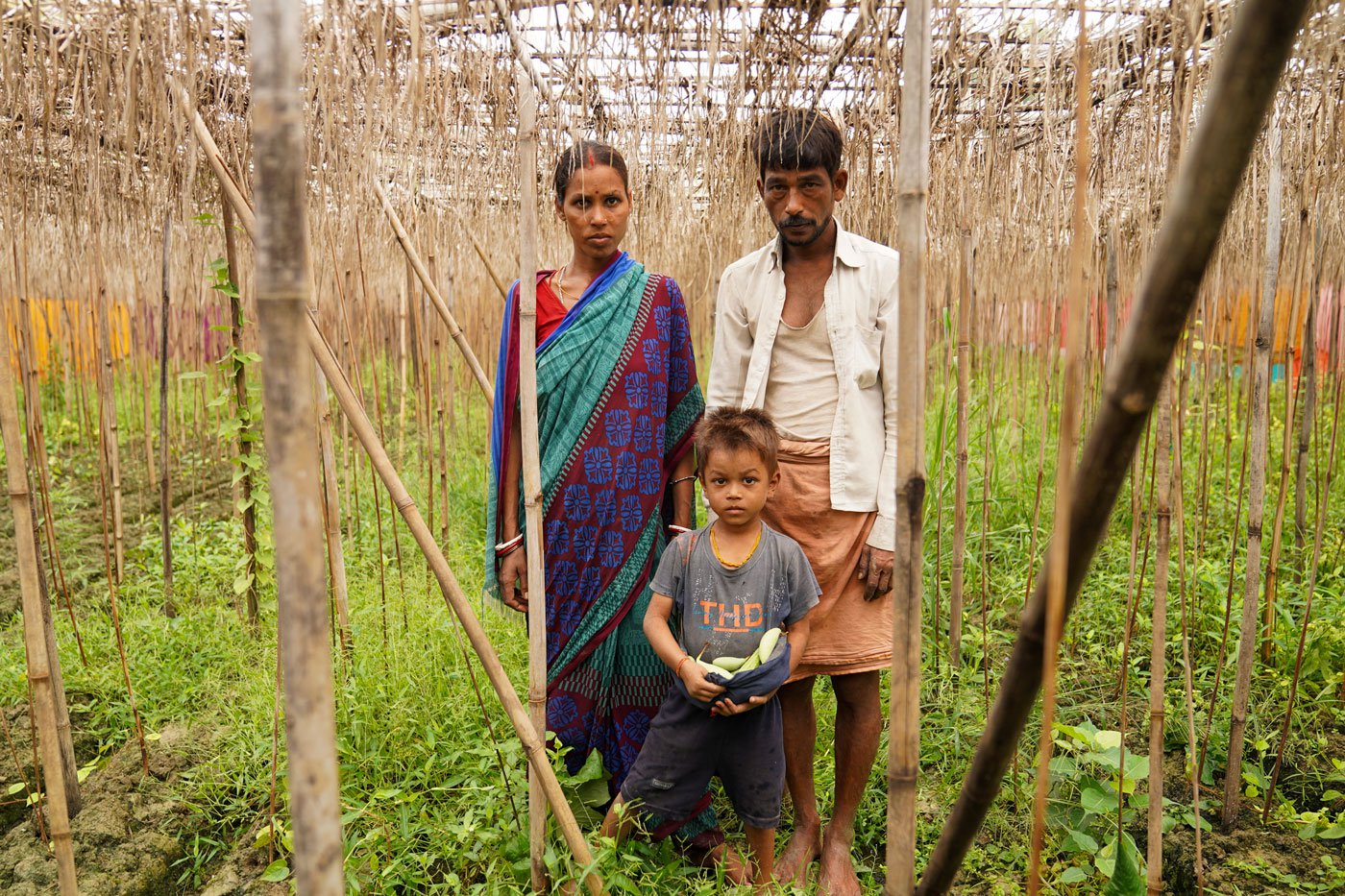
Betel leaf farmers, Karuna Devi and Sunil Chaurasia in their bareja . Their son holding a few gourds grown alongside the betel vines, and the only crop (for their own use) that survived
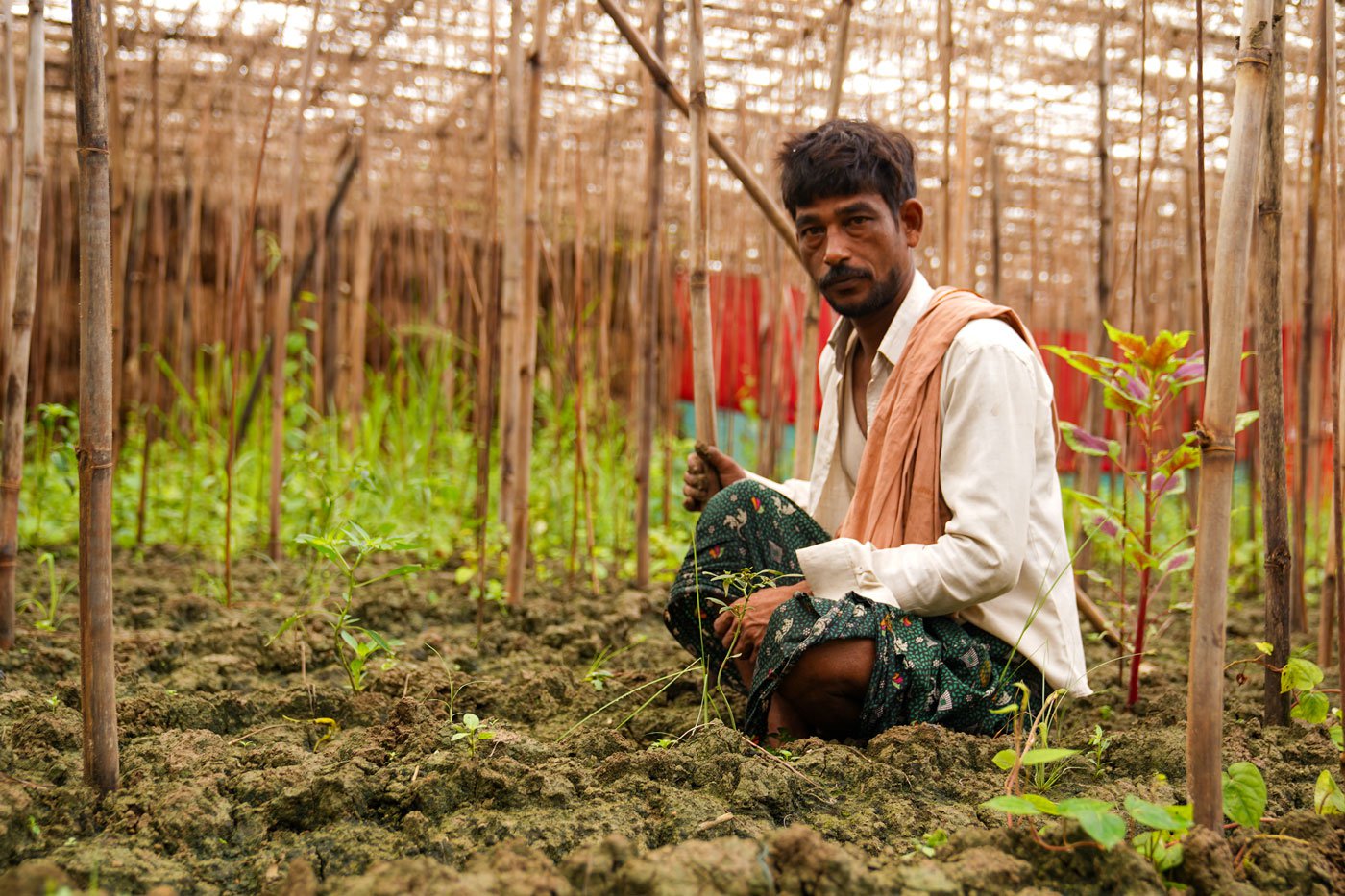

Newada district experienced intense heat in the summer of 2023, and many betel leaf farmers like Sunil (left) were badly hit. K a runa Devi (right) also does daily wage work in other farmers' betel fields for which she earns Rs. 200 a day
A betel-leaf garden is called bareja or baretha in Bihar. The delicate vines cannot handle extreme weather and this hut-like structure protects them from the scorching sun in summer and harsh winds in winter. It is typically fenced with sticks of bamboo, and palm and coconut fronds, coir, paddy straws, and arhar stalks. Inside the bareja, the soil is ploughed into long and deep furrows. Stems are planted in such a way that water does not collect near the root and rot the plants.
Last year, to
counter the intense heat, Karuna Devi’s husband recalls how “we watered only
2-3 times a day as irrigating more would have increased expenses. But the
weather was so hot that it didn't survive. “Plants started drying up, and soon
the
bareja
was laid to waste,” says
40- year-old Sunil Chaurasia. Their entire cultivation of betel leaf was lost.
“I don't know how the loan will be repaid,” says a worried Karuna.
Weather patterns in the Magadh region are changing, say scientists studying the region. “We are seeing that what used to be a homogeneous weather pattern has now become quite erratic. There is a sudden increase in temperature and sometimes it rains heavily within a day or two," says environmental scientist, Prof. Pradhan Parth Sarthi.
Average temperatures have shot up by 0.5 degree Celsius over the period 1958-2019, says a research paper titled ‘Environmental change and groundwater variability in South Bihar, India,’ published in Science Direct journal in 2022. Greater unpredictability of monsoon rainfall is also evident from the 1990s onwards, it says.
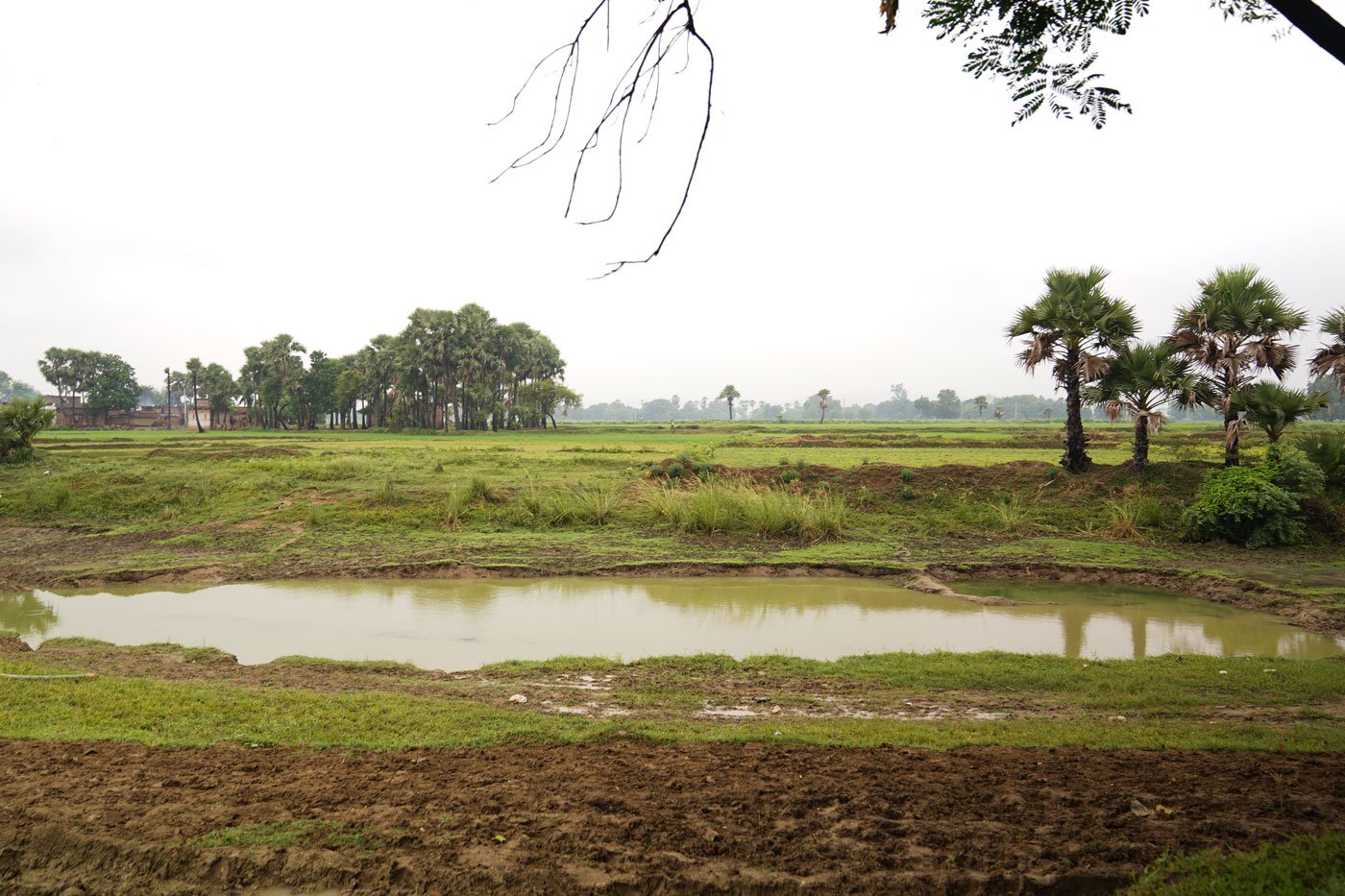

Magahi
paan needs fertile clay loam soil found in the Magadh region in Bihar. W
ater logging can be fatal to the crop, so
paan
farmers usually select land with proper drainage to cultivate it


A betel-leaf garden is called
bareja
in Bihar. This hut-like structure protects the delicate vines from the scorching sun in summers and harsh winds in winters. It is typically fenced with sticks of bamboo, and palm and coconut fronds, coir, paddy straws, and
arhar
stalks. Inside the
bareja
, the soil is ploughed into long and deep furrows. Stems are planted in such a way that water does not collect near the root and rot the vine
“ Magahi paan ka kheti jua jaisa ha i [ Magahi betel leaf cultivation is as uncertain as gambling],” says Ajay Prasad Chaurasia, another farmer of Dheuri village. He is speaking for the many Magahi farmers who now live on the edge. “We work very hard, but there is no guarantee that betel plants will survive.”
Successive years of extreme weather is playing havoc with Magahi betel crops in the area. Betel leaves are traditionally grown by Chaurasias who belong to the Extremely Backward Class [EBC] in Bihar. There are over six lakh Chaurasias in the state, according to a recent caste survey conducted by the Bihar government.
Dheuri village lies in Hisua block of Nawada; of its population of 1,549 (Census 2011), more than half are engaged in agriculture.

Betel leaf farmer Ajay Chaurasia says, ' Magahi betel leaf cultivation is as uncertain as gambling...we work very hard, but there is no guarantee that betel plants will survive'
The 2023 heatwave was preceded by a spell of very heavy rain in 2022. “ Lagta tha jaise pralay aane wala ho. Andhera chha jata tha aur lagatar barsa hota tha. Humlog bheeg bheeg kar khet mein rahte the. [It looked like catastrophe was on the way. The day would turn dark followed by heavy rain. We would drench ourselves in water and despite this, stay in the field],” says Ranjit Chaurasia.
The 55-year-old says he came down with a fever after that, and he also incurred a big loss. “Majority of betel plant farmers in my village suffered loss that year,” he says. “I had cultivated betel leaf in five cottah [roughly 6,800 sq ft]. The betel vines dried up due to waterlogging.” Cyclone Asani in Odisha had caused the heavy rain that lasted for three -four days.
“Heatwaves dry out the soil, preventing the growth and when there is sudden rainfall, plants dry up," adds Ranjit who is also president of the farmers collective, Magahi Pan Utpadak Kalyan Samiti here. "The plants were new. They should have been looked after like a newborn baby. Those who did not, their betel vines dried up,” he says.
In 2023, Ranjit says his plants survived the severe heatwave as he sprinkled water multiple times, “I had to water it many times. Sometimes 10 times a day."

Uncertainty of weather and subsequent crop losses, has forced many farmers of Dheuri village to give up betel cultivation. 'Till 10 years ago, more than 150 farmers used to cultivate betel leaf in 10 hectares, but now their number has reduced to less than 100 and currently it is being grown in 7-8 hectares,' says Ranjit Chaurasia
Fellow
Magahi
farmer and neighbour Ajay says he faced losses twice in five
years due to extreme weather events. In 2019, the 45-year-old had grown betel
in four
cottah
(roughly 5,444 sq ft ). It was ruined by severe cold; in October 2021, heavy rains brought by
cyclone Gulab completely damaged the leaves. “I incurred a total loss of around
Rs. 2 lakhs in both years,” he recalls.
*****
Ajay Chourasia is tying the betel vines to thin stalks of bamboo or sarkanda to prevent them from swaying and dropping. The heart-shaped shiny green betel leaves hang heavy on the vine; they will be ready to be plucked in a few days.
The temperature in the lush green structure is cooler than the outside. Ajay says that extreme hot, cold and excessive rain are the biggest threats for betel plants. In scorching summer, if the maximum temperature rises beyond 40 degrees Celsius, he must manually spray them with water. He puts an earthen pot of water, carrying roughly five litres on his shoulder, and using his palm to spread the flow of the water, moves slowly between the vines, sprinkling water as he walks. "We have to do it multiple times if the weather is too hot. But there is no way to protect them from rain and cold," he points out.
“Although there has been no study on the extent to which climate change has contributed to the erratic weather, the changing weather patterns indicate the impact of climate change,” says Sarthi, who is the Dean of the School of Earth, Biological and Environmental Science at Central University of South Bihar at Gaya.
Ajay has eight
cottah
(roughly 10,000 sq ft) of his own land, but it is scattered, so he has taken a
three
cottah
plot on lease at Rs.
5,000 a year and spent about Rs. 75,000 to cultivate
Magah
i betel leaf in the leased land. He took a loan of Rs.
40,000 from the local self-help group, which has to be repaid in the next eight
months by paying Rs. 6,000 every month. “So far, I have deposited only Rs.
12,000 in two instalments," he says, speaking to us in September 2023.

Ajay is sprinkling water on betel plants. He places an earthen pot on his shoulder and puts his palm on the mouth of the pot. As he walks in the furrows the water drips onto the vines

Although Ajay's wife, Ganga Devi has her own bareja , losses have forced her to also seek wage work outside
Ajay’s wife, 40-year-old Ganga Devi sometimes helps him in the field, and also does agricultural labour work in other farmers’ fields. “It is a laborious job but we get just 200 rupees daily,” she says about her wage work. Their four children – a nine-year-old daughter and sons aged 14, 13 and 6 years, study in a government school in Dheuri.
Crop losses caused by extreme weather events have forced betel leaf farmers to work as labourers at other farmers' betel fields as they have expertise in this crop.
*****
Magahi betel leaf get its name from Magadha where it is exclusively cultivated. The Magadha region of Bihar includes Gaya, Aurangabad, Nawada and Nalanda districts of south Bihar. “No one knows how and when the first Magahi plant cuttings reached here but it has been growing for generations. We heard that the first plant came from Malaysia,” says farmer Ranjit Chourasia, who has a deep interest in the leaf and is the one who applied for the Geographical Indicator (GI) tag for Magahi paan leaf.
A
Magahi
leaf is the size of a young child's palm – 8 to 15 cm long and 6.6 to 12 cm
wide. Fragrant and soft to the touch, there is almost no fibre in the leaf so
it dissolves very easily in the mouth – a singularly outstanding quality that
makes it superior to other species of betel leaf. Its shelf life is longer
too. After plucking, it can be kept for 3-4 months.


Ajay Chaurasia is tying the plant with a stick so that it does not bend with the weight of leaves. Magahi betel leaves are f ragrant and soft to the touch. There is almost no fibre in the leaf so it dissolves very easily in the mouth – a singularly outstanding quality that makes it superior to other species of betel leaf
"You have to wrap them in wet cloth and keep them in a cool place and check daily if any leaves are rotting. If so, you have to immediately remove it otherwise it will spread to other leaves," says Ranjit. We watch him wrap the betel leaves, seated on the floor at his pucca house.
He places 200 leaves on top of each other and cuts the stem with a hacksaw blade. Then he ties the leaves with thread and puts them in a bamboo basket.
Betel plants are propagated via cuttings since they don't bear flowers, hence no seeds. "When a fellow farmer's crop fails, other farmers share the cuttings from their crops with him to re-establish his field. We never take money from each other for that,” Ranjit Chaurasia says.
The vines are grown in a
bareja
and it costs around Rs. 30,000 to build a
bareja
covering a
cottah
(roughly 1,361 sq ft); the cost goes up to Rs. 45,000 for two
cottahs
. The soil is ploughed into
long and deep furrows, and the stems are planted besides the furrows where soil
accumulates so that water does not reach the plant's root as water logging at
the root rot the plants.


Ranjit Chaurasia’s mother (left) is segregating betel leaves. A single rotting leaf can damage the rest when kept together in storage for 3-4 months. 'You have to wrap them in wet cloths and keep them in a cool place, and check daily if any leaves are rotting and immediately remove them or it will spread to other leaves,' says Ranjit (right)


In its one year life, a Magahi betel plant produces at least 50 leaves. A leaf is sold for a rupee or two in local markets as well as in the wholesale mandi of Banaras in Uttar Pradesh. It is a cash crop, but the Bihar government considers it as horticulture, hence farmers do not get benefits of agricultural schemes
A single vine of Magahi betel produces at least 50 leaves in its year-long life. A leaf is sold for a rupee or two in the local markets as well as in the wholesale mandi of Varanasi in Uttar Pradesh – the biggest betel leaf mandi in the country.
Magahi betel leaf was awarded a GI in 2017. The GI is for leaves grown exclusively in 439 hectares of the geographical region of Magadha. And the farmers were excited and relieved to have the GI. However, as the years passed, they say they have not benefited. “We had expected that the government would advertise Magahi which would generate more demand and we would get a good rate, but nothing happened,” Ranjit Chaurasia tells PARI. “ The sad part is that despite GI tag government is not doing anything for betel leaf farmers. Government is not considering betel as agriculture,” he says.
Betel leaf cultivation comes under
horticulture
in Bihar, and farmers do not get benefits of agricultural schemes like crop insurance. “The
only benefit we get is compensation when our crops are damaged due to bad
weather but the compensation amount is laughable,” Ranjit Chaurasia says of the
Rs. 10,000 compensation for damage of a hectare (approximately 79
cottah
). “If you calculate it in terms
of a
cottah
then each farmer gets
around Rs.126 for loss in one
cottah
.”
And he adds that farmers have to visit the district agriculture office many
times so often they don’t claim compensation.
*****


Left: Karuna Devi and her husband Sunil Chaurasia at their home. Karuna Devi had taken a loan of Rs. 1 lakh to cultivate Magahi betel leaves, in the hope that she would repay it from the harvest. She mortgaged some of her jewellery as well. Right: Ajay and his wife Ganga Devi at their house in Dheuri village. The family lost a crop in 2019 to severe cold, and in October 2021 to heavy rains caused by Cyclone Gulab. 'I incurred a loss of around Rs . 2 lakh in both the years combined,' he says
After losing their crop to extreme heat in 2023, Sunil and his wife now work in the bareja of other farmers. "To run the household, I have to work as labour. Working at bareja has been easy for me because I have been cultivating paan for many years,” he says. Sunil earns Rs. 300, and his wife Karuna Devi Rs. 200 a day for working 8-10 hours. The earnings help run the house for the family of six: a daughter aged 3, and three sons ages one, five and seven.
In 2020, covid-19 induced lockdowns also caused losses. “During the lockdown, everything- from the market to vehicles were closed. I had 500 dholi [a bundle of 200 betel leaves] paan kept in the house. I could not sell it and it rotted,” he recalls.
Karuna Devi says, “I often tell him to leave [betel leaf] cultivation.” However, Sunil brushes her concerns off saying, “it is the legacy of our forefathers. How can we leave it and what will we do even if we leave it?”
This story is supported by a fellowship in memory of a trade unionist from Bihar who championed the struggles of marginalised people in the state.
